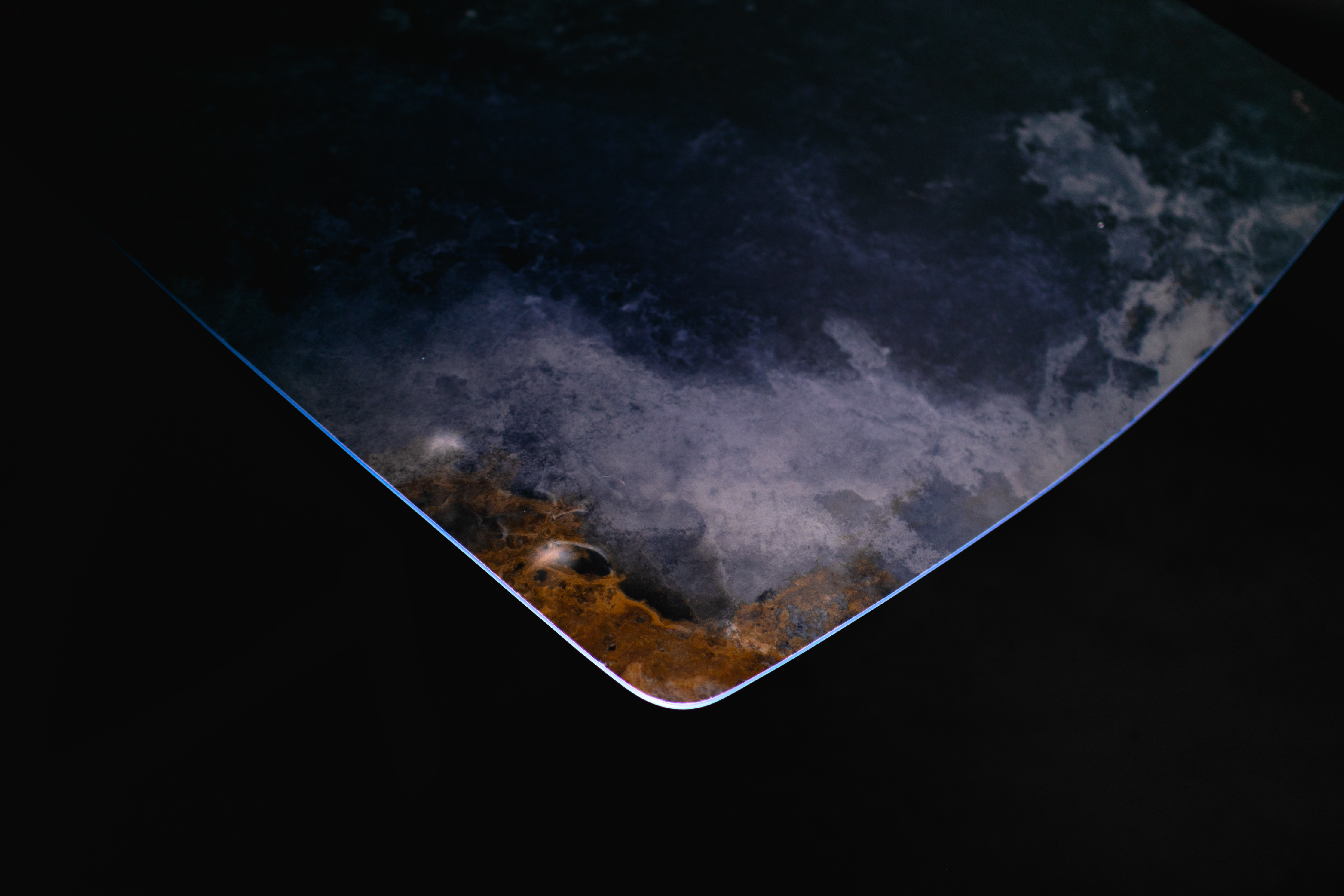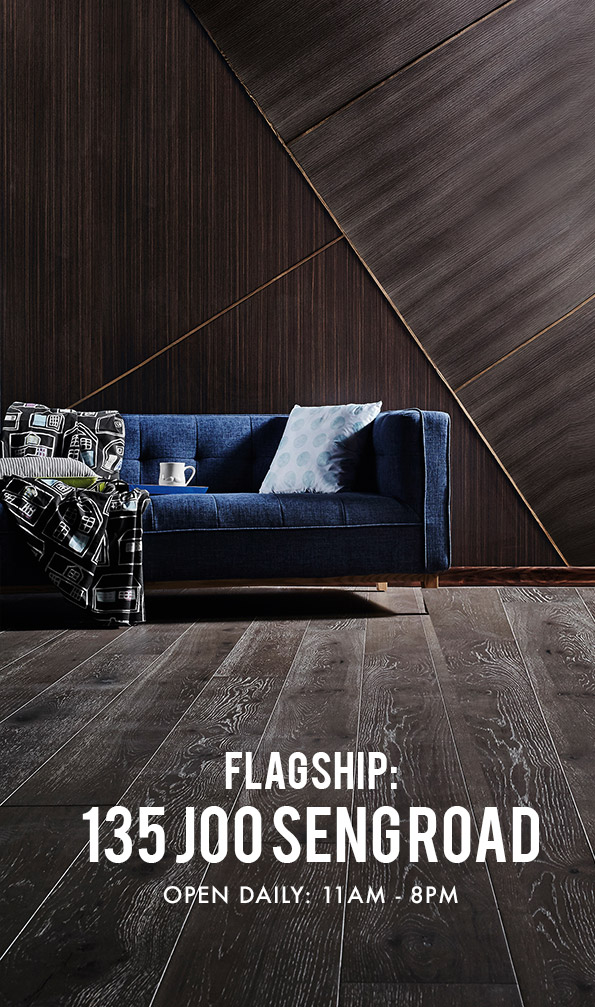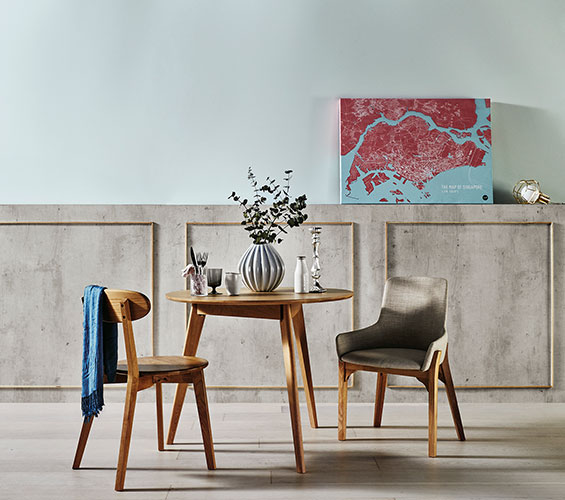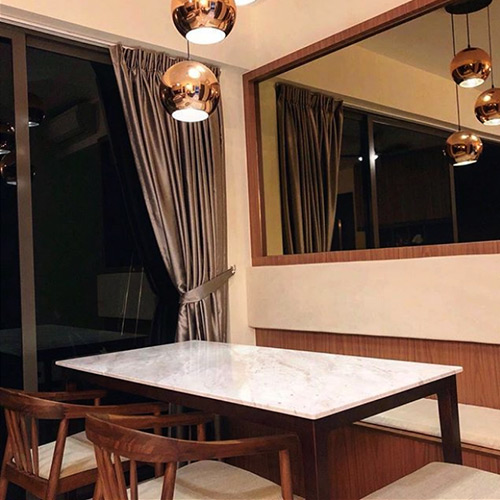Engineered Stone (Porcelain) Vs Sintered Stone

Engineered Stone (Porcelain) vs Sintered Stone
We understand how complicated it is to select the right top for your dining table when there are so many options available in the market and so, we have decided to break it into simple points for you to make the correct choice for your next dining table!
What is Engineered Stone (Porcelain)?
Modern porcelain stones are made by processing and kiln firing kaolinite-rich clay into an incredibly durable multipurpose material with many natural advantages. Like competitive quartz and solid surface materials, porcelain slab tops are nonporous, so they’re a safe and healthy option for food preparation. Unlike those two materials, however, porcelain can be installed outside and is both heat- and frost-tolerant.
Porcelain is an extremely hard surface that isn’t prone to the scratches, staining, and other damage that daily household life can inflict on natural marble, but it can be manufactured with comparable beauty, thanks to inkjet production technologies. Unlike natural stones, however, each porcelain slab is uniform, so you don’t have to view through multiple slab selections to choose your favorite piece.
Why Engineered Stone (Porcelain)?
Porcelain technology has been around for many years. The material is used in many different aspects of product creation and design. Its rich history and diversity have caused many to learn from this material. Additionally, many people have experience products that are composed of or are created entirely of porcelain and because of the familiarity with porcelain, a certain degree of trust was built. As a result, the increased use of porcelain as a cladding and surface material (countertops in particular) has been well received.
Plenty of designs to choose from due to the fact that it is man-made. Let your imagination run wild!
Heat/Frost resistance. Never have to worry about your hot pot of soup or the next hotpot gathering again!
Weather resistance. This material is non-porous and also UV resistant and therefore you won’t need to ever worry about the surface turning yellow over time!
Fuss Free Maintenance. Never have to worry about spills at your next house gathering anymore! The nightmare of finding wine, coffee, juice and etc stains on your tabletop will be a thing of the past.
Durability. It is very hard to scratch, chip, or damage a piece of sintered stone. Perfect for households with kids!
Size & Thickness. You must be wondering if porcelain is very thick and heavy but in fact, porcelain is a very lightweight material and they usually come in 12mm(1.2cm) thickness!
Uniformed designs. As natural stones are formed naturally, most marble, granite, and Quartz has this issue where every single piece of the slab is different (similar to thumbprints). This isn’t an issue for porcelain stones as they are designed to be consistent with every slab.
The downside of Porcelain Stone
There is only two disadvantage of porcelain stone we can think of and the first one is aesthetics. Nothing man-made will be able to beat the beauty of the natural stones and most man-made stones do not have grains running down the sides as compared to natural stones such as marble/granite or even engineered stones (which is made from a mixture of natural stones).
Secondly, most Porcelain stone slabs only come in a standard-sized (usually 3.2 x 1.6m) so if you are looking for a bigger piece, you may need to get multiple pieces to join together.
What is Sintered Stone?
Firstly, sintering is actually a process. It is when materials are combined into a solid piece through the use of heat. Basically, the sintering process is the manmade version of the intense heat and pressure that the earth does to materials to create certain surfaces.
Sintered stone is a material that is relatively new when you compare it to porcelain. Where porcelain has been around for years, "sintered stone" is just making its name. However, there are some similarities even though the two materials are different from one another. Namely, the process through which these materials are made is similar.
Why Sintered Stone?
As mentioned above, one of the similarities between sintered stone and porcelain is that these surfaces are both "sintered" and therefore, the pros of having a sintered stone top as compared to a porcelain engineered stone are pretty similar. Although both sintered stone and porcelain materials make use of the sintering process, they only differ in a couple of important respects. First, the raw materials used are different. Second, the sintering process itself varies from one manufacturer to the next.
So, the pros of having a sintered stone top are pretty similar to that of an engineered stone (porcelain) top!
So, there you have it! At etch&bolts, we carry a wide range of porcelain and sintered stones from Italy and renowned brands such as Consentino and many more!
We hope this information will help you with the selection of your next dining tabletop! Feel free to drop us a message or head down to our flagship store at 135 Joo Seng Road #02-01/02/03, S368363 if you have any other questions for us!



